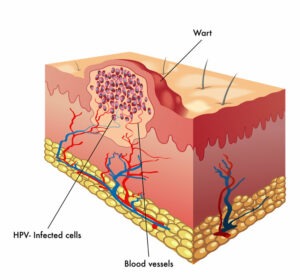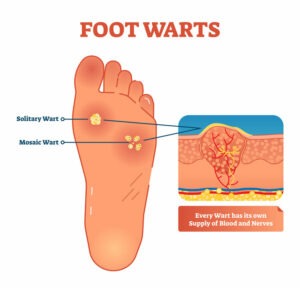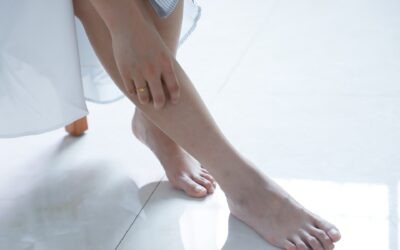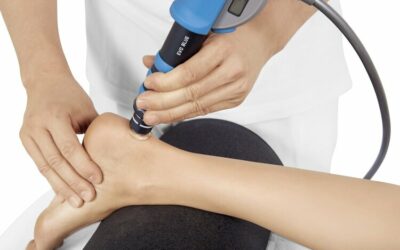Now that swimming pools are opening up and the flip flop season is about to begin, we have seen a rise in clients seeking help with pesky verrucas.
Along with this rise in cases comes an increase in questions, so, in this article, we will cover off some of the most common ones along with top tips on how to avoid and treat verrucas, including verruca needling.
What is a verruca?
Verrucas are small lumps on the skin caused by certain strains of a virus called HPV – the human papillomavirus. Verrucas are similar to warts but commonly occur on the soles of the feet and toes and are very contagious. You can have this virus for many years before a verruca appears.
WHAT DOES A VERRUCA LOOK LIKE?
From the surface, a verruca can appear like a rough lump. I compare it to a small volcano, raised with a pitted, rough centre which sometimes can have black dots inside. The surface area of the verruca is minimal but can run very deep into the skin and is fed with blood, making them very hard to treat, especially with home remedies.
WHAT HAPPENS IF A VERRUCA IS LEFT UNTREATED?
Verrucas can clear on their own, but this can take months and, in some cases, years.
If left untreated, they can also spread, cluster and cause pain when walking.
You also risk passing the virus on to others, so it is recommended that the verruca is treated straight away.
WHAT ARE THE BLACK BITS IN A VERRUCA?
The black dots are dried blood contained in the capillaries, nothing more.
If your wart/verruca were to turn black completely, this would indicate the virus’s death within the verruca, and the “lump” would start to disappear over time.
WHAT DO I DO IF I HAVE MANY WARTS/VERRUCAS CLUMPED TOGETHER?
A cluster of verrucas is often referred to as mosaic warts. This can happen if the verruca is left untreated or is treated wrongly and spreads the virus over a larger area of skin.
We often see this when people try to file down a verruca.
To prevent the spread of a verruca, make sure to –
-
Wash your hands after treating/touching your verruca
-
Do not cut or file the infected area
-
Change your socks daily
-
Cover your verruca when barefoot, for example, around the home or at public swimming centres.
HOW DO YOU GET RID OF A VERRUCA?
There are many home treatments you can use, and in most cases, well-maintained home treatment can help you get rid of small, young verrucas. However, if the verruca has spread and becomes clustered, sore or infected, you will need professional treatment.
Treatments –
VERRUCA NEEDLING
Verruca needling is routinely used by practitioners and is a highly effective treatment for long-standing verrucas.
It works by stimulating the body’s immune system to heal warts and verrucas. To achieve this, the podiatrist will puncture the area with a small needle to cause bleeding. The site is then dressed. Patients can remove the dressing after three days and continue life as usual.
DOES VERRUCA NEEDLING HURT?
As it is performed over hard skin on the sole of your foot, it is very uncommon for pain to occur.
CRYOTHERAPY. LIQUID NITROGEN
Known as freezing warts, this treatment destroys both the wart and a small area of normal skin around the wart.
This treatment may need to be performed over several weeks, depending on the size of the infected area.
DOES FREEZING WARTS/VERRUCAS HURT?
Yes and no, the freezing sensation can cause pain but is also likened to holding an ice cube to the skin. Which, for some, is bearable compared to other treatments or the verruca itself.
The area may turn red or even form a blister after treatment.
SALICYLIC ACID TOPICAL ACID APPLICATION
It is used on a wart/verruca as a “peel”, helping to remove dead skin cells by chemically exfoliating the top layer of skin. Applied daily, the skin is pulled and peeled away until the root of the verruca is exposed and killed.
IS SALICYLIC ACID TOPICAL ACID APPLICATION PAINFUL?
No, but it can become irritating if used too often. It is recommended only to treat the area in question and avoid getting it on healthy skin.
For more advice on verrucas and warts, or to speak to us about a treatment which suits you, why not get in touch today.



